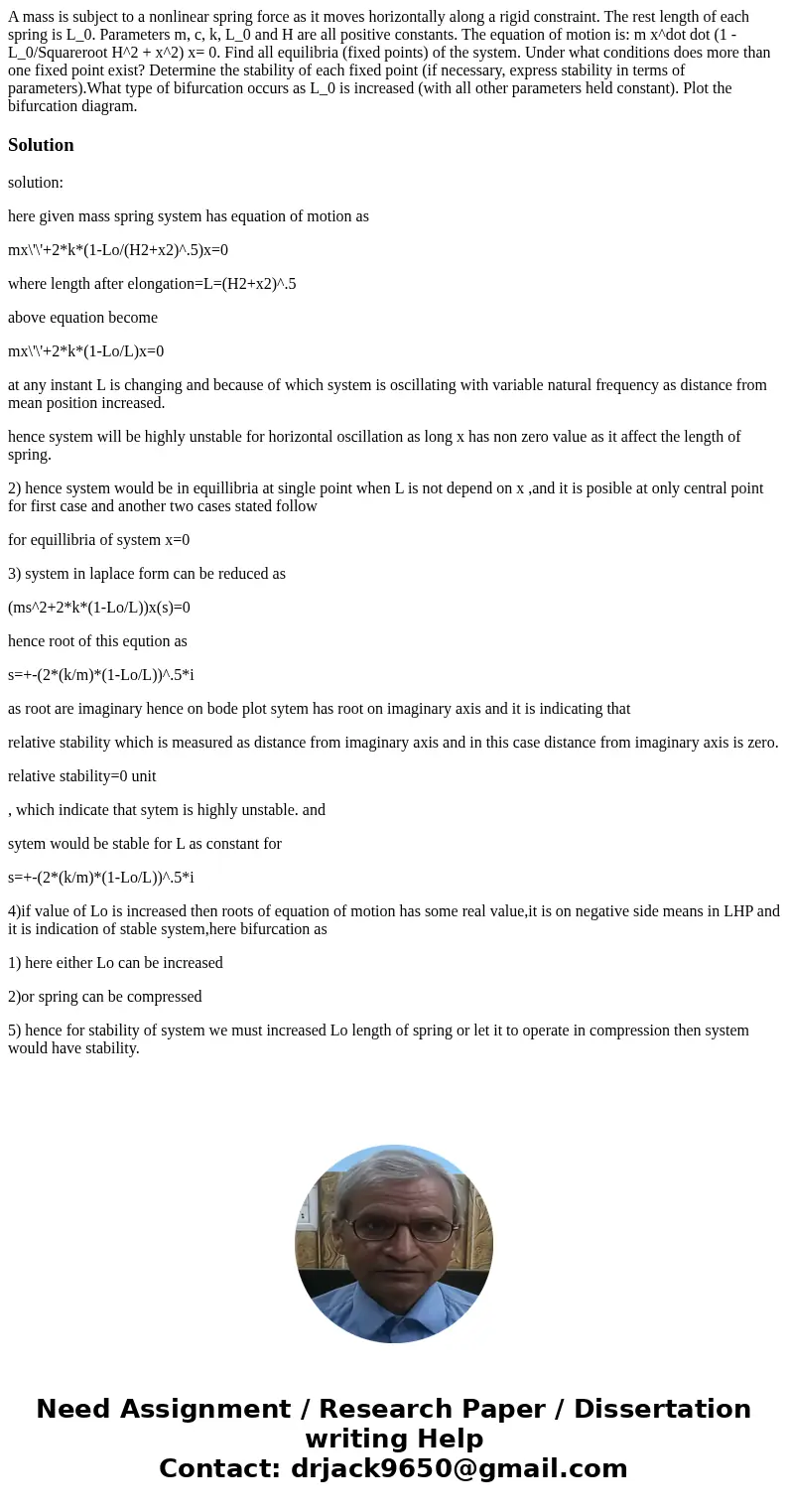A mass is subject to a nonlinear spring force as it moves ho
Solution
solution:
here given mass spring system has equation of motion as
mx\'\'+2*k*(1-Lo/(H2+x2)^.5)x=0
where length after elongation=L=(H2+x2)^.5
above equation become
mx\'\'+2*k*(1-Lo/L)x=0
at any instant L is changing and because of which system is oscillating with variable natural frequency as distance from mean position increased.
hence system will be highly unstable for horizontal oscillation as long x has non zero value as it affect the length of spring.
2) hence system would be in equillibria at single point when L is not depend on x ,and it is posible at only central point for first case and another two cases stated follow
for equillibria of system x=0
3) system in laplace form can be reduced as
(ms^2+2*k*(1-Lo/L))x(s)=0
hence root of this eqution as
s=+-(2*(k/m)*(1-Lo/L))^.5*i
as root are imaginary hence on bode plot sytem has root on imaginary axis and it is indicating that
relative stability which is measured as distance from imaginary axis and in this case distance from imaginary axis is zero.
relative stability=0 unit
, which indicate that sytem is highly unstable. and
sytem would be stable for L as constant for
s=+-(2*(k/m)*(1-Lo/L))^.5*i
4)if value of Lo is increased then roots of equation of motion has some real value,it is on negative side means in LHP and it is indication of stable system,here bifurcation as
1) here either Lo can be increased
2)or spring can be compressed
5) hence for stability of system we must increased Lo length of spring or let it to operate in compression then system would have stability.

 Homework Sourse
Homework Sourse